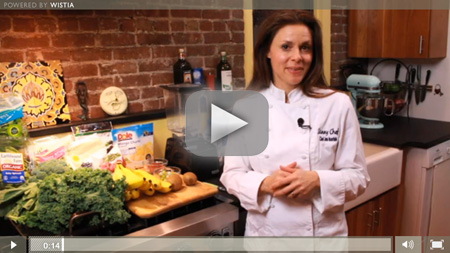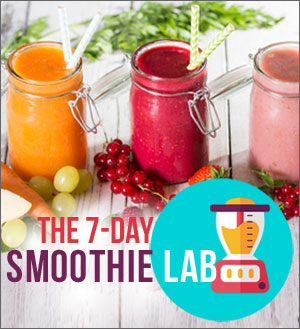When it comes to eating healthy whole foods, take vegetables for example, I believe that the recipe or the preparation make all the difference in the world. This is especially true when you’re introducing a new food or trying to get kids and adults excited about an ingredients that has a lot of health benefits. My husband is a great example, he grew up eating a bland, mushy lentil soup and steamed kale as a kid, so he was hating both! But by tweaking the preparation and switching up the ingredients, he’s now a big fan of my lentil salad and adores our recipes from my book 50 Shades of Kale. So here are my top recipes to getting folks to eat the foods they typically hate, that even works with picky eaters.
Brussels Sprout
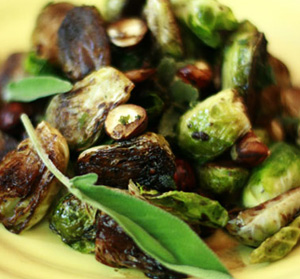 I grew up eating the frozen variety which turns to mush as soon as you cooked them. Fresh Brussels sprouts that aren’t overcooked, are a totally different experience, in texture, smell, and taste. Pan-cook them or roast them — don’t steam them, otherwise their delicate leaves turn slimy and the sulfur compounds in them become airborne.
I grew up eating the frozen variety which turns to mush as soon as you cooked them. Fresh Brussels sprouts that aren’t overcooked, are a totally different experience, in texture, smell, and taste. Pan-cook them or roast them — don’t steam them, otherwise their delicate leaves turn slimy and the sulfur compounds in them become airborne.
Health Benefits: These miniature cabbages have a world of nutrition in them! They are very high in fiber, vitamin K, vitamin C, protein and are a rich source of many essential minerals like potassium, iron and magnesium. Nutritionist give thumbs up to their detoxifying quality in the form of sulfur compounds that can help the body protect against disease and ward off cancer. Just 1 cup gives you 100% of your daily needs for vitamin C.
Make It, Love It: Buy fresh Brussels sprouts — you can find them in your local produce isle, usually sold in pints. Slice each one down the middle and peel off a few of the outside leaves. Cook them on medium heat in a tablespoon of extra-virgin olive oil with freshly chopped garlic on the stove. Salt and pepper to your taste. Add gourmet flare with chopped walnuts, balsamic syrup and grated Parmesan cheese. You can also shred them raw in a food processor and cook them in a little olive oil and serve with buttered noodles.
Broccoli
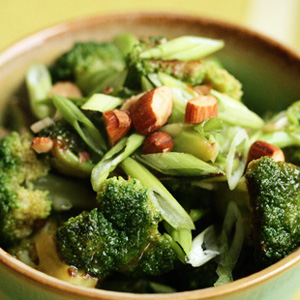 Folks are usually fifty-fifty when it comes to broccoli — they either love it or hate it. Broccoli is part of the cabbage family just like Brussels sprouts, so avoid overcooking at all costs. I chop my florets and saute them in a skillet with olive oil, then add a little chicken broth and cover to steam through until tender crisp. Break the bigger florets into tiny bite-size florets and make your youngster a healthy fried-rice with brown rice, corn kernels and thinly sliced carrots.
Folks are usually fifty-fifty when it comes to broccoli — they either love it or hate it. Broccoli is part of the cabbage family just like Brussels sprouts, so avoid overcooking at all costs. I chop my florets and saute them in a skillet with olive oil, then add a little chicken broth and cover to steam through until tender crisp. Break the bigger florets into tiny bite-size florets and make your youngster a healthy fried-rice with brown rice, corn kernels and thinly sliced carrots.
Health Benefits: Broccoli has high levels of so many nutrients like vitamin C, vitamin K, vitamin A, calcium and fiber just to name a few. It’s one of my top pics for kids, since kids tend to eat small portion-sizes and broccoli gives a wallop of nutrients in a tidy package.
Learn To Like It: Lightly steamed or raw, broccoli can be eaten with your fingers and dipped into tasty sauces. So become a dipping daredevil! Broccoli is a mild tasting veggie that goes well with barbeque, ketchup, low-cal salad dressing, and even marinara. Do your kids love Chinese take-out? Make garlic broccoli at home.
Fish
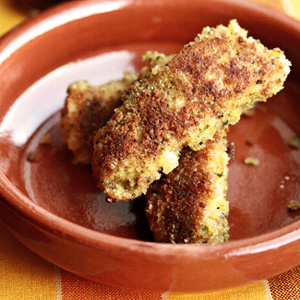 Fish can freak out people, especially kids. Fish that isn’t fresh can smell fishy, even after it’s cooked. It’s important to get the freshest fish you can find the first time you bring it to your family table. Smell the raw fish fillet before you prepare it, it should smell like the sea with the exception of some oilier sea fish like salmon. Keep in mind that even fresh salmon should only have a light odor to it, and if you wrinkle your nose after the “sniff” test, your kids will probably do the same.
Fish can freak out people, especially kids. Fish that isn’t fresh can smell fishy, even after it’s cooked. It’s important to get the freshest fish you can find the first time you bring it to your family table. Smell the raw fish fillet before you prepare it, it should smell like the sea with the exception of some oilier sea fish like salmon. Keep in mind that even fresh salmon should only have a light odor to it, and if you wrinkle your nose after the “sniff” test, your kids will probably do the same.
Health Benefits: Fish is a great way to get protein with a lot less fat. Fish is also low in saturated fat, or the “bad” kind of fat that is found to raise blood cholesterol and contribute to inflammation in the body. Fish is also an excellent way to get more B12, needed for healthy blood production, into your diet.
Make It, Love It: Start your fish newbie out on sustainable low-mercury, tender white fish like sole, tilapia, and cod. My homemade fish sticks are crunchy outside and flaky inside. When I make them for kids, they don’t even realize they are eating fish. Once you make them homemade, you’ll never go back to the store-bought version — loaded with preservatives, unhealthy fat, and excess sodium. Trying to get a grown-up hooked on fish? Fish in parchment paper is a no-fail way to make moist tender fish without overcooking.
Carrots
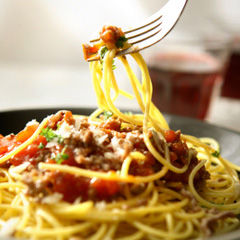 Carrot sticks find their way into many lunch boxes and usually get ignored. Some kids turn their noses up at the vegetable’s earthy notes that this otherwise sweet veggie can have. Roasting is the name of the game, to bring out more of the sweetness in carrots. Peel, chop and roast in a little olive oil and salt in a 400F oven on a greased baking sheet. 30 minutes later, you’ll have a soft, sweet side dish.
Carrot sticks find their way into many lunch boxes and usually get ignored. Some kids turn their noses up at the vegetable’s earthy notes that this otherwise sweet veggie can have. Roasting is the name of the game, to bring out more of the sweetness in carrots. Peel, chop and roast in a little olive oil and salt in a 400F oven on a greased baking sheet. 30 minutes later, you’ll have a soft, sweet side dish.
Health Benefits: The golden pigment found in carrots, beta carotene, is a strong anti-oxidant important in eye and skin health, especially when it comes to growth and repair. Carrots also tend to be high in fiber, a necessary nutrient that is lacking in most people’s diet.
Make It, Love It: Carrots are oh-so-easy to sneak into stews, chili, and meat sauces — all you have to do it grate carrot into your favorite casserole or stew before cooking. I add grated carrot to my turkey bolognese to increase nutrition and portion-size with less calories.
Spinach
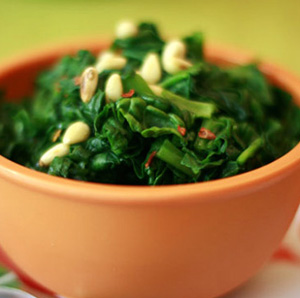 Apart from broccoli, most folks are wary of green foods. Frozen spinach and tough mature spinach leaves are problematic, so start with tender baby spinach. Most organic brands on the market are pre-washed which saves precious time in the kitchen.
Apart from broccoli, most folks are wary of green foods. Frozen spinach and tough mature spinach leaves are problematic, so start with tender baby spinach. Most organic brands on the market are pre-washed which saves precious time in the kitchen.
Make It, Love It: Remember how Popeye’s muscle would bulge after eating spinach? Spinach is like octane fuel for your body and is one of the top superfoods containing extremely high levels of A and C vitamins, fiber, folic acid, magnesium and many other nutrients that help to build your immune system.
Make It, Love It: Baby spinach is versatile and cooks in just under a minute. Thinly slice and toss with scrambled eggs or saute it with a little olive oil and crushed red chili flakes. Tuck it into my recipe for chicken enchiladas for a one pot meal that also contains a serving of veggies. Looking for an elegant salad that both kids and adults will enjoy? Make a salad with strawberries and sprinkle them over a bed of fresh spinach.
Avocado
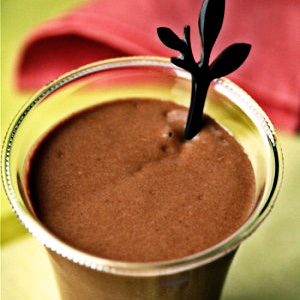 Some people balk at the creamy texture of avocado that seems greasy to them. Be sure that your avocado is not over- or under-ripe to get the best taste and texture. The surface of the peel should not be sunken, that’s usually an indication that there are rotten spots in the flesh. It should give slightly when pressed with your fingertips. Most avocados in the grocery store are under ripe and should rest on your counter top for 2-3 days to soften.
Some people balk at the creamy texture of avocado that seems greasy to them. Be sure that your avocado is not over- or under-ripe to get the best taste and texture. The surface of the peel should not be sunken, that’s usually an indication that there are rotten spots in the flesh. It should give slightly when pressed with your fingertips. Most avocados in the grocery store are under ripe and should rest on your counter top for 2-3 days to soften.
Make It, Love It: Avocados are high in dietary fiber, potassium, folate, and vitamin C. They are high in the good kind of fat, monounsaturated fat, which helps lower cholesterol while giving this fruit its decadent creaminess.
Make It, Love It: Guacamole, a Mexican side sauce, has become a American staple and it’s no wonder with its luscious texture spiked with jalapeno and fresh lime. But it’s also fun to use avocado in sweet recipes as well, like my chocolate avocado shake.
I hope this treasure trove of tips will get you inspired!

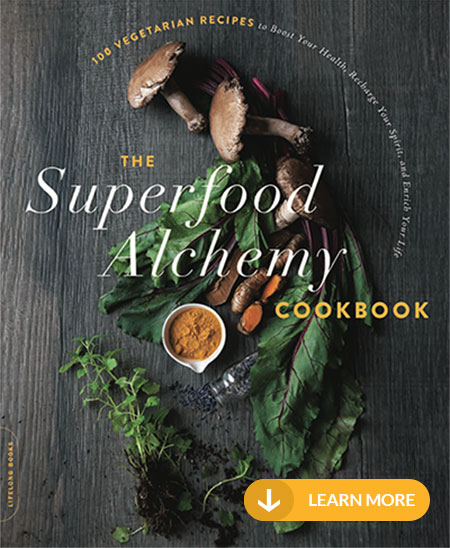

 Are you ready to look better, feel more energized, and get back that youthful feeling you remember having as a kid? I can help you on a journey that will change the way you eat — for good. My
Are you ready to look better, feel more energized, and get back that youthful feeling you remember having as a kid? I can help you on a journey that will change the way you eat — for good. My 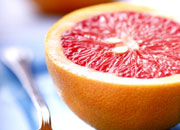











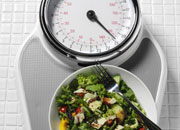
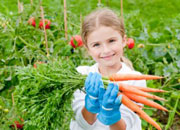

 As a healthy cooking expert, health coach and TV host,
As a healthy cooking expert, health coach and TV host, 

